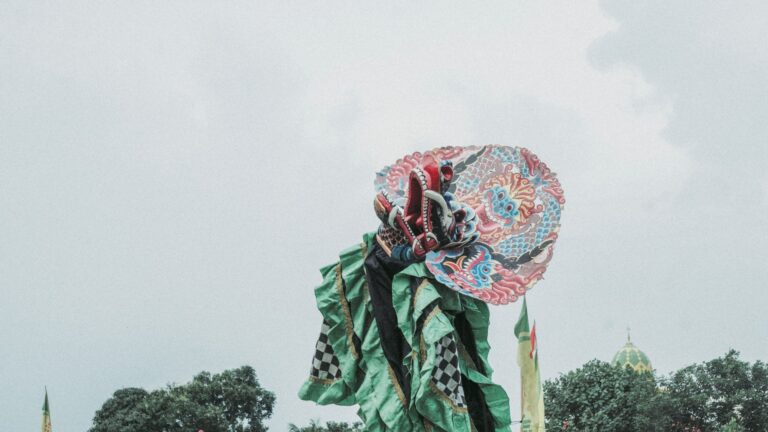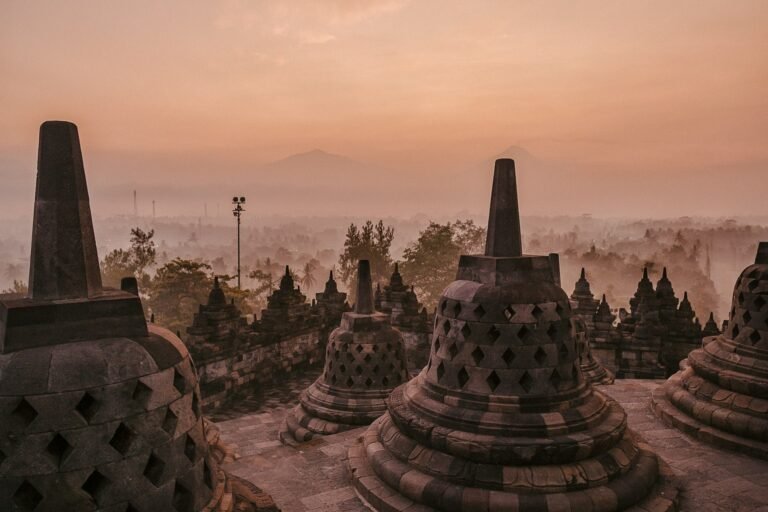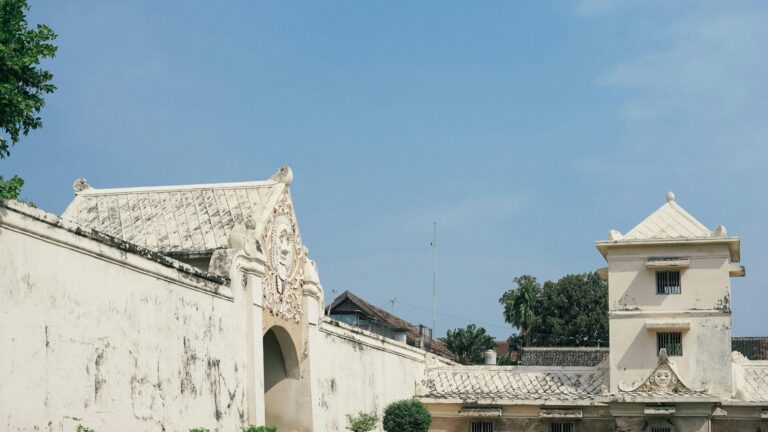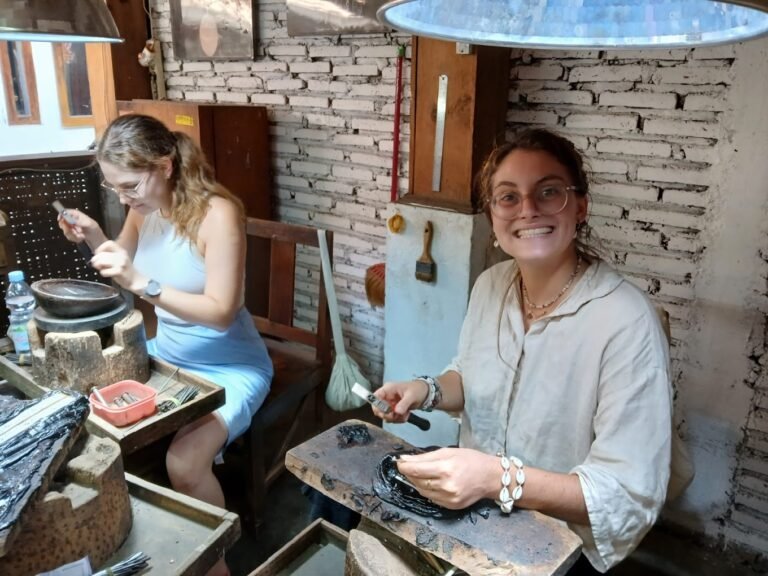Candi Mendut is a Buddhist-style temple in Mendut Village, Mayor Kusen Street, Mungkid City, Magelang Regency, Central Java. It is situated approximately 3 kilometers from Borobudur Temple.
The construction of the Mendut Temple took place during the reign of King Indra of the Syailendra dynasty.
The Karangtengah inscription, dated 824 AD, mentions that King Indra built a sacred building called “wenwana,” which translates to a bamboo forest. According to Dutch archaeologist J.G. de Casparis, this term is associated with Mendut Temple.
Entrance Fees and Operational Hours
Location: Mayor Kusen Street, Sumberejo Hamlet, Mendut Village, Mungkid Subdistrict, Magelang Regency, Central Java.
Operational hours: Tuesday-Sunday from 07:00 to 17:00 WIB (Closed on Monday).
Ticket prices:
- Adults: Rp10,500 per person.
- Children: Rp5,500 per person.
- Foreign tourists: Rp20,500 per person.
Temple Architecture
The temple is primarily constructed with brick covered in natural stone. It stands on a high basement, giving it an elegant and sturdy appearance.
The entrance staircase faces southwest. Above the basement, there is a surrounding corridor. The three-tiered roof is adorned with small stupas totaling 48. The height of the building is 26.4 meters.
The adornments at Mendut Temple consist of alternating decorations featuring celestial beings like Gandarwa and Apsara, two monkeys, and a garuda.
On both sides of the staircase are reliefs depicting stories from Pancatantra and Jataka.
The temple walls are adorned with reliefs of Bodhisattvas, including Awalokiteśwara, Maitreya, Wajrapāṇi, and Manjuśri. The body of the temple features reliefs of kalpataru, two celestial maidens, Harītī (a repentant yaksha who followed Buddha), and Āţawaka.
Inside the main chamber are three large Buddha statues: Dhyani Buddha Wairocana with the dharmacakramudra hand gesture. In front of the Buddha statue is a relief resembling a wheel flanked by a pair of deer, symbolizing Buddha. On the left, there is the statue of Awalokiteśwara (Padmapāņi), and on the right, the statue of Wajrapāņi.
Read More: Ratu Boko: Grandeur on a Hill Full of Tranquility That Mesmerizes
History
According to Perpusna’s page, although the exact construction date is uncertain, a Dutch philologist named J.G. de Casparis speculated that Mendut Temple was built by the first king of the Syailendra dynasty in 824 AD.
Casparis based his assumption on the content of the Karangtengah Inscription (824 AD), which mentioned that King Indra had created a sacred building called Wenuwana.
Casparis interpreted the term Wenuwana (bamboo forest) as Mendut Temple. This is why Mendut Temple is estimated to be older than Borobudur Temple.
The temple was rediscovered in 1836, where the entire structure was found, except for its roof. From 1897 to 1904, the Dutch East Indies government conducted the first restoration effort, yielding satisfactory results, although still imperfect.
During this time, the base and body of the temple were successfully reconstructed. In 1908, Van Erp led another reconstruction of Mendut Temple, improving the roof, reinstalling the stupas, and fixing parts of the roof’s angle.
Restoration was briefly halted due to insufficient funds but resumed in 1925.
Reliefs
This square-shaped temple stands at 26.40 meters, perched on a pedestal about 2 meters high. The temp temple’s surface features a broad terrace equipped with steps.
The lower walls of Mendut Temple are adorned with 31 panels showcasing various story reliefs, beautifully carved flowers, and vines.
The staircase leading to the terrace on the west side is embellished with several carved panels depicting BuddBuddha’schings.
At the temple’s inner chamber entrance, there is a display chamber adorned with Kuwera relief on the north wall and Hariti relief on the south wall. The temple’s walls are adorned with reliefs related to the life of Buddha:







